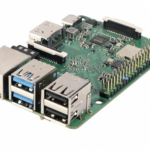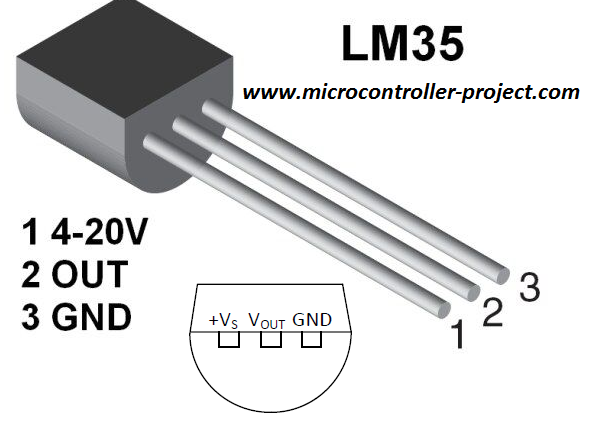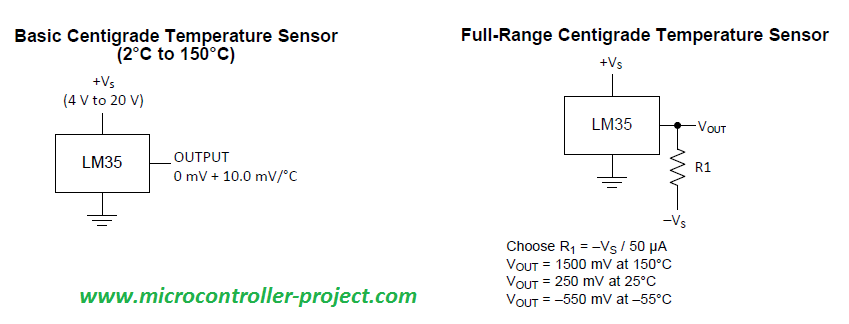LM35 Temperature sensor Features
|
LM35 Pin Out |
The input voltage to LM35 can be from +4 volts to 30 volts. It consumes about 60 microamperes of current. Lm35 has many family members a few names are LM35C, LM35CA, LM35D, LM135, LM135A, LM235, LM335. All LM35 family members work on the same principles but temperature measuring capacity varies and also they are available in many packages (SOIC, TO-220, TO-92, TO ).
LM35 Working Principle (Understanding LM35 Linear Scale Factor)
LM35 temperature sensor circuit configuration
LM35 can be used in two circuit configurations. Both yield different results. In the first configuration, you can only measure the positive temperature from 2 degrees Celsius to 150 degrees Celsius. In this first configuration, we simply power lm35 and connect the output directly to analog to digital converters. In the second configuration, we can utilize all the sensor resources and can measure the full range temperature from -55 degree centigrade to 150-degree centigrade. This configuration is a little complex but yields high results. We have to connect an external resistor, in this case, to switch the level of negative voltage upwards. The external resistor value can be calculated from the formula given below the configuration circuit. The second configuration circuit can be made in various ways.To see about the second configuration circuits visit the LM35 datasheet by Texas Instruments. Texas Instruments data sheet enlists the circuit with clear component values.
Although the first configuration did not need a resistor at the output side, I recommend connecting an 80 k to 100 k resistor between vout and gnd pin. When I performed several experiments I noticed that the readings some time fluctuate and the vout pin floats. So a resistor between vout and gnd tights the vout pin low and prevents the pin from floating.
Steps to calculate temperature using LM35 temperature sensor
|
Formula to convert voltage to temperatureThe formula to convert the voltage to centigrade temperature for LM35 is I divided by 10 mV because Linear scale factor is for LM35 is 10mV. |
Following the above steps and tutorial, you can easily interface LM35 temperature sensor with any microcontroller that has a built-in analog to digital converter pins. Almost all the microcontrollers today have built-in ADC.
Some projects that are created using LM35 and different microcontrollers.
You may also like:

What are different types of industrial robots?
How does LoRa modulation enable long-range communication?
What is the role of embedded software in electric vehicles?
What are the components of robotic arms and industrial robots?
What are the top development boards for AI and ML?
What is the Modbus protocol and how does it work?
Filed Under: Electronic Projects
Tagged With: circuit, lm 35, pinout, Sensor features, temperature sensor






Questions related to this article?
👉Ask and discuss on Electro-Tech-Online.com and EDAboard.com forums.
Tell Us What You Think!!
You must be logged in to post a comment.